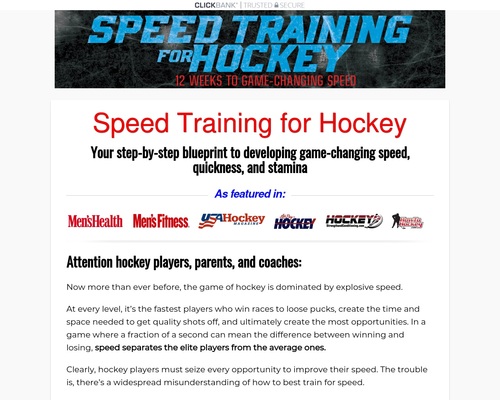Much of the available information on speed training for hockey is either outdated, overly scientific, impractical, or flat out ineffective.
Many players continue to spend valuable training time on “quick feet” drills with cones and ladders, as well as other speed drills they typically lift from a track and field or football training program.
This so-called “speed work” is often supplemented with old school bodybuilding or powerlifting routines in the weight room, or worse, no strength training at all.
Unfortunately, these common off-ice training practices have little bearing on skating and on-ice performance. Skating is a unique motion that has several very notable differences compared to running. Understanding these differences, as well as considering the impact of the rapid accelerations, decelerations, and direction changes required in hockey are all incredibly important when designing a training program that will transfer to on-ice improvements.
In addition to the lack of awareness regarding hockey-specific speed training, many players will also perform their speed work in a way that actually makes them slower.
Speed development requires a specific amount of intensity to make a change. If this intensity cannot be maintained for any reason (e.g. insufficient rest between reps, poor recovery between days, etc.) the training becomes “conditioning” at best, and useless stress at worst. In either case, the player exerts a lot of energy, but doesn’t get faster, and may expose themselves to an increased risk of injury in the process.
Playing hockey today requires a significant and constantly growing time commitment. Players have more games and travel than ever before, and more “competing demands” for training time. With this in mind, it is essential that players make the best use of their limited training time by following a training program that cuts out the fluff, and only includes proven, effective methods.
This is exactly why I wrote Speed Training for Hockey.
Now you can have exclusive access to the training programs and information that have helped hundreds of athletes at every level develop game-changing hockey speed.





